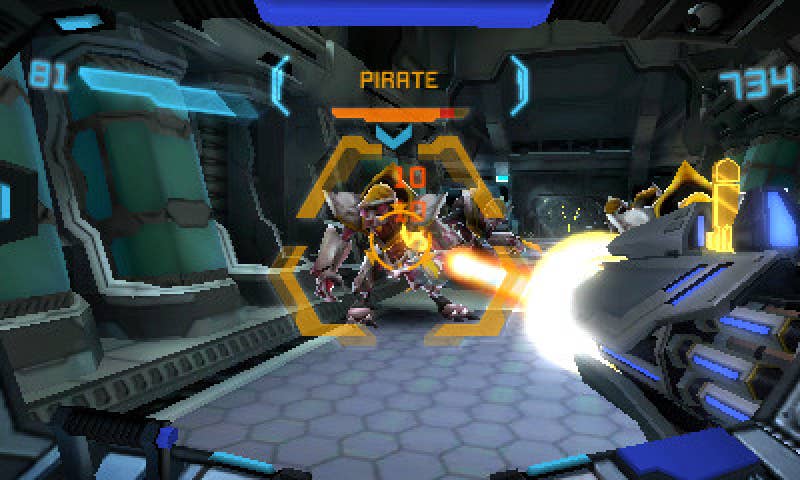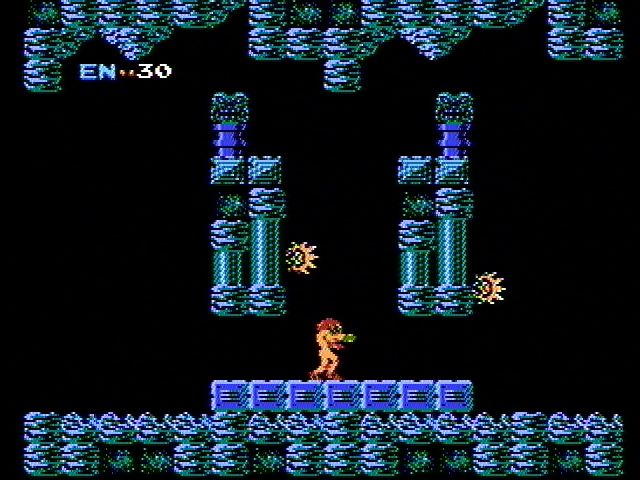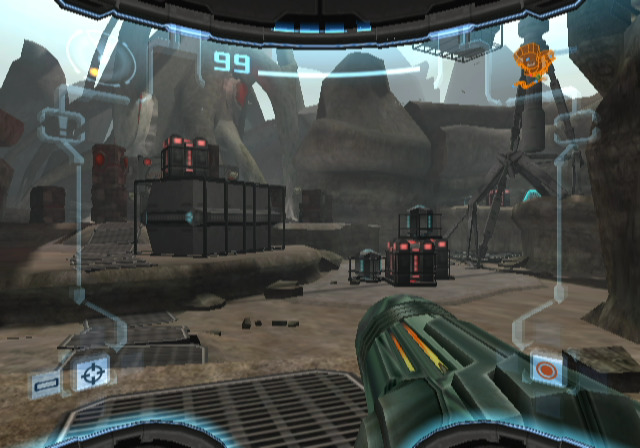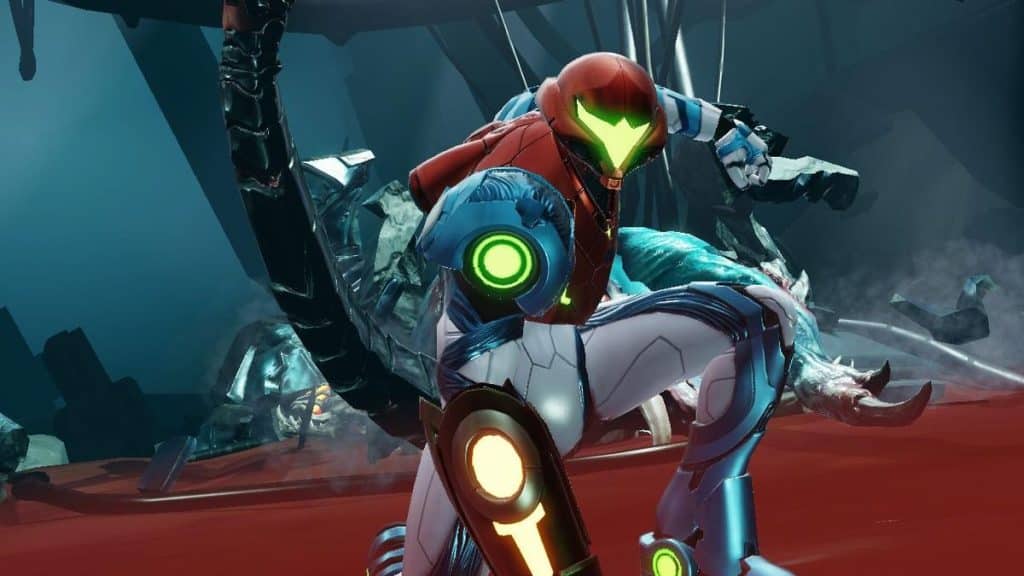Metroid Prime, a genre-defining game, has been around the block in terms of style, gameplay mechanics, and storyline. It’s been reworked through almost every advancement made within the gaming industry. As such, there are a lot of Metroid games (not as many as Mario, but that’s a whole different beast), each with their quirks and mishaps. So, let’s go through and figure out which are the powerhouses and which just…fizzled. So, let’s rank the Metroid games from bottom to top!
Metroid Prime: Federation Force (2016) – 3DS

Released in 2016, this Metroid Prime game was supposed to answer almost nine years of fans demanding another title game. The problem? This game had NOTHING to do with the Metroid Prime series outside of its name. No Samus, no dark storyline, nothing! I would equate it more to a hardcore Power Rangers than a Metroid Prime game. This co-op nightmare tanked in sales in Japan; only 7,000 copies were sold, making it the worst in sales ever.
The co-op function was possible its only redeeming feature, but the in-game chat left much to be desired. Let’s not get started on the art style! Cutsey-looking figures that devs were probably hoping to sell action figures for, disappointing, to say the least!
Metroid: Other M (2010) – Wii
This release had great combat mechanics that were smooth and flashy- everything we asked for. It had an interesting third-person/first-person combo gameplay that made it unique, but that’s all she wrote. The travesty that makes this one of the more painful games is what they did to Samus Aran. They reduced our hero to a meek soldier who could barely tie her shoes without permission, a crime in itself. We wanted our lady boss to show off her skills and were met with a watered-down version that we could see through her in the right light.
The level design, as a typical linear style that left discovery take a backseat in a whole different car. The storyline itself was equaly horrible and took eveything when loved about the game and did a 180 on us. We will not discuss the dialogue, please don’t make me do it!
Metroid Prime Pinball (2005) – DS
It’s a sad thing when a spin-off ranks higher than a mainline title, but that’s what this one does. Metroid Prime Pinball was released in 2005 and was a surprisingly addictive game to play. It had cool music and sound effects that you could find in the Metroid Prime game, with bosses that were fun to beat. It kept you entertained even without a deep storyline or door-blasting combat, which was very surprising.
The problem was, while fun to play, it had little to do with the Metroid Prime storyline and had limited content. So, I guess you could say that it wasn’t really a game changer for the franchise. It didn’t take away form the Metriod universe but it also didn’t add anything special to it. Fun for what is it but ultimately, its a game you play when you’re bored and have nothing else to do.
Metroid Prime Hunters (2006) – DS
Metroid Prime Hunters—a solid idea, shaky execution. It introduced rival bounty hunters, so it was set up for a great storyline, awesome potential but failed to deliver. The bounty hunters underperformed and were forgettable (not the best thing you want to hear). This led to a paper-thin solo-player campaign, another bummer. he multiplayer was ahead of its time, but without Samus-centric storytelling or classic exploration, it just didn’t hit the same.
The multiplayer was the saving grace, with decent online features. The visuals were amazing on the DS! The graphics were solid, and I, for one, will never fault a game for looking pretty…but. It didn’t make up for the touchscreen aiming which was awkward. A great concept but rough controls and lackluster campaign have it rating low.
Metroid (1986) – NES

Now we get to the OG—Metroid. This is where it all started: a creepy alien planet, eerie music, and a surprise twist that Samus wasn’t some faceless soldier but a badass woman under the helmet. Unfortunately, it’s aged like space milk. No map, no guidance, and punishing difficulty make it a chore unless you’re rocking a walkthrough. Important? Absolutely. Fun in 2025? Not so much. Unless you love the challenge (then you’re a madman…respect)!
Metroid II: Return of Samus (1991) – Game Boy
Then there’s Metroid II: Return of Samus. Ambitious for a Game Boy title, it introduced the concept of exterminating Metroids one by one on their home planet. It brought key lore into the fold and had a more focused structure than the NES original. So, a first real storyline for the series. But limited visuals, like cramped screens, repetitive environments, and no in-game map, hold it back today. Respect the hustle, but go play the remake.
Metroid: Samus Returns (2017) – 3DS
Metroid: Samus Returns is a remake of Metroid II: Return of Samus (just in case it wasn’t obvious), and it’s a good one. It adds modern combat mechanics like the melee counter and free aiming, which give it a much-needed shot of adrenaline. The environments are rich, the music energizes you, and it finally gives Metroid II the respect it deserves. But it also leans a little too hard on repetition—there are only so many times you can fight near-identical Metroid forms before it gets old.
Metroid Prime 3: Corruption (2007) – Wii
Metroid Prime 3: Corruption gets a lot of love for doing motion controls right. The Wii aiming system felt natural, and it gave us a grand, cinematic conclusion to the Prime trilogy. It’s polished, beautiful, and ambitious—but more linear than fans were used to, leading it to feel more like a guided shooter than a good explorative adventure (shooter, you can’t forget the shooting). It had too many cutscenes and too many supporting characters that never quite landed. Still, a strong entry with a satisfying finale.
Metroid: Zero Mission (2004) – Game Boy Advance

Metroid: Zero Mission is everything a remake should be. It takes the bones of the NES classic and wraps them in tight controls, slick visuals, and an expanded story that includes a Zero Suit stealth section (I’m a sucker for stealth missions!). It’s fast, accessible, and a perfect entry point for new fans. Only downside? It’s short. Like, really short. But what’s there is gold. So, it’s a perfect game for new fans to the franchise to play but are too intimidated by OGs to start from the beginning.
Metroid Fusion (2002) – Game Boy Advance
MetrMetroid Fusion is one of the boldest entries. It leans hard into horror with the SA-X stalking you across the space station, making you feel hunted for once. The storytelling is tight, and the tension is high. I’m betting a few of the devs were huge horror genre fanatics. But it’s also the most linear 2D Metroid, so exploration purists might bounce off the hand-holding. That said, it’s still one of the most atmospheric games in the series.
Metroid Prime 2: Echoes (2004) – GameCube
Metroid Prime 2: Echoes brings the moodiest energy of the trilogy. Dark Aether is brutal, and the dual-world mechanic adds depth and complexity. The difficulty? No joke. It pushes you hard and doesn’t always explain itself. The ammo system has limited choices, but the vibes and bosses make it one of the most intense Metroid games out there. So, to rage quit or not to rage quit? That is the ultimate question. This Metroid Prime game will answer it for you.
Metroid Dread (2021) – Switch
Metroid Dread is everything I wanted from a modern 2D Metroid Prime game. The controls are butter-smooth, the art is stylish, and the boss fights? Absolute heat. Samus finally feels as fast and lethal as we’ve always imagined. The E.M.M.I. sections add horror tension, though they can get a bit samey after a while. What’s up with constantly reusing assets in this series? Still, it’s a powerful comeback, and Samus has never looked cooler.
The last two games are constantly switched with each other in terms of which is the best. I’m sure you already know the ones and let me tell you it was HARD trying to pick which went where! I finally made the decesion and here we are!
Super Metroid (1994) – SNES
Coming in hot at number two is Super Metroid. This game is legendary for a reason. It has a massive map, incredible pacing, haunting music, and one of the most emotional endings in gaming. If you’ve ever played a “Metroidvania,” you owe this game your life; it was the one that DEFINED the genre. It’s not perfect—wall jumps are annoying, and some secrets are absolutely ridiculous(I understand they’re secrets devs, but really?)—but it’s still a masterpiece.
Metroid Prime (2002) – GameCube

And, of course, at the top is Metroid Prime. This is how you bring a franchise into 3D. The world of Tallon IV is moody, mysterious, and endlessly explorable. The scanning system adds lore without slowing gameplay, the soundtrack is pure atmosphere, and the mechanics are tight. Yes, the artifact hunt near the end drags (I can’t believe I wrote that; I love artifact hunting), and yes, it could’ve used fast travel. But none of that stops Prime from being an absolute BOSS GAME. It’s the blueprint for how to reimagine a classic.
Final Thoughts
The Metroid games have a LONG and extensive history within the gaming world. Some defined the genre, others wanted to burn it down. That doesn’t take away from the fact that this series pushed the envelope when it came to story, style, or mechanics. With the release of Metroid Prime 4: Beyond just around the corner I can’t wait to see where it will go on this list. So, do you agree with me, or have a differing opinion?


